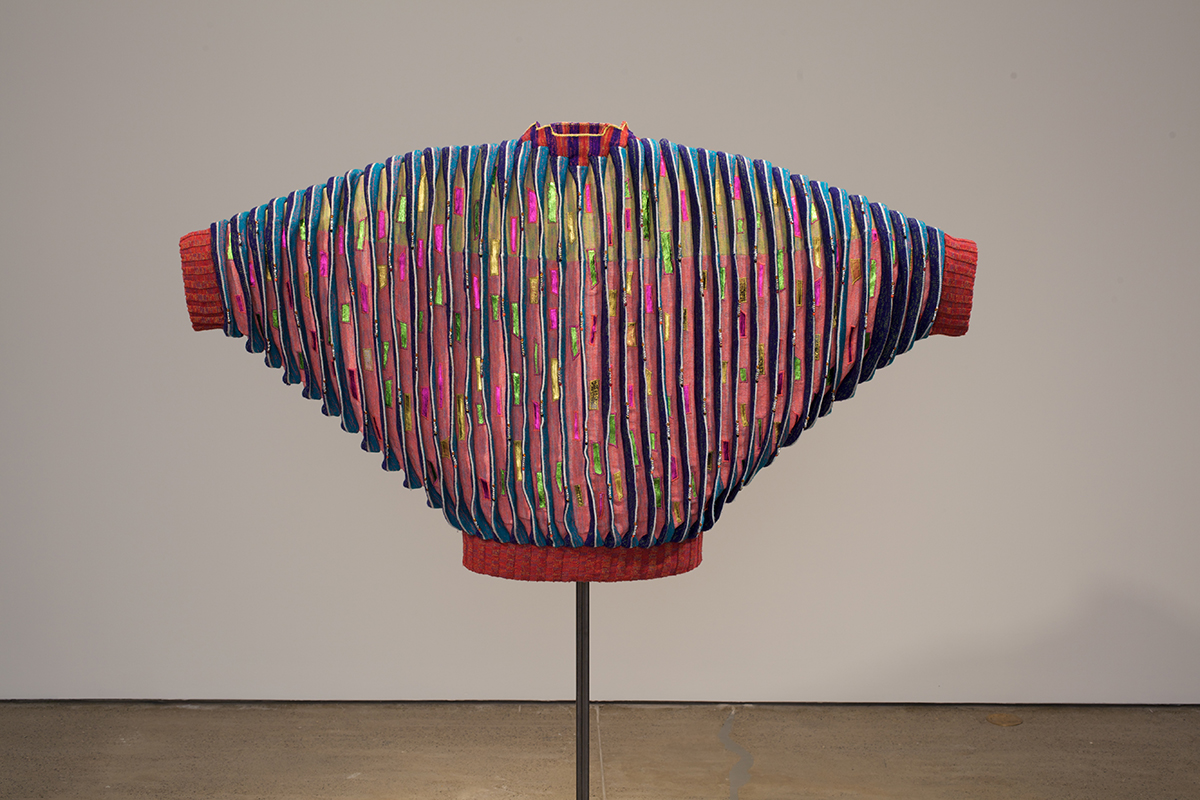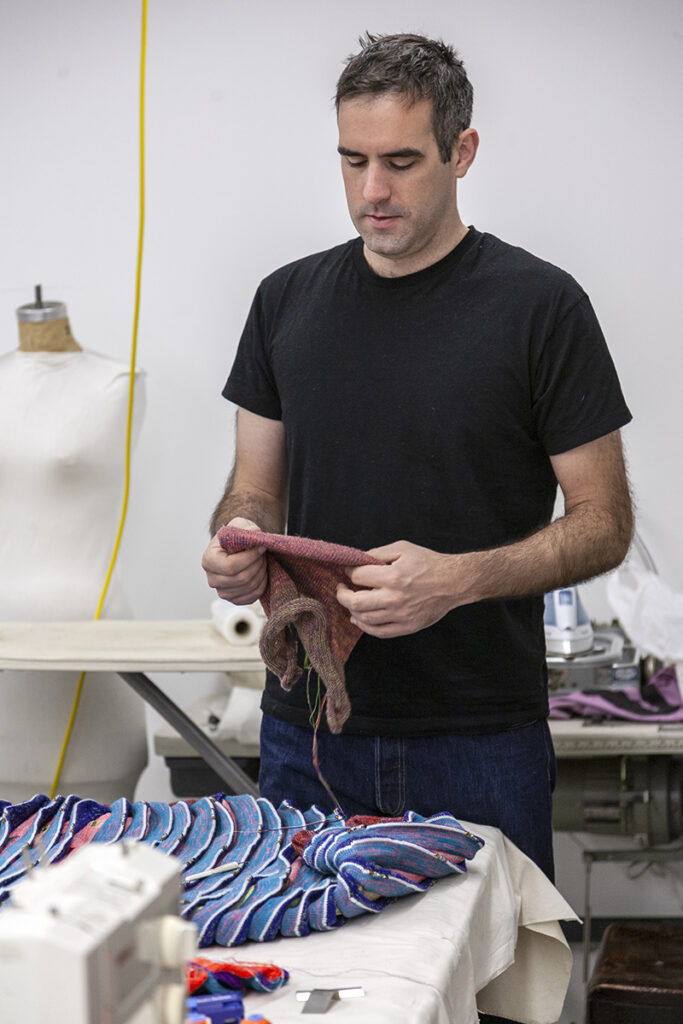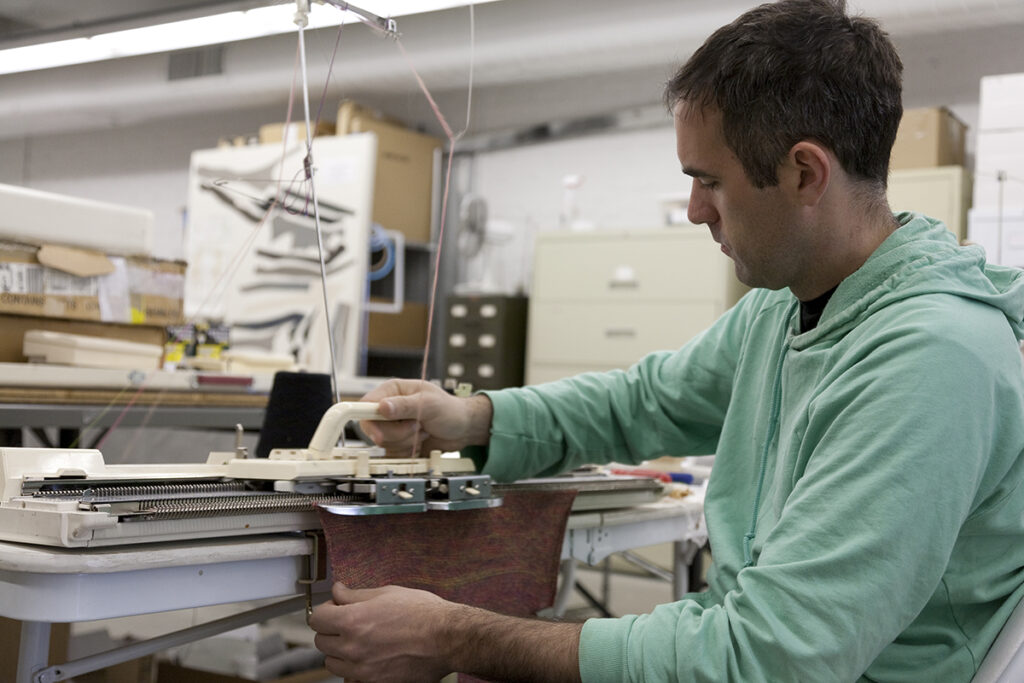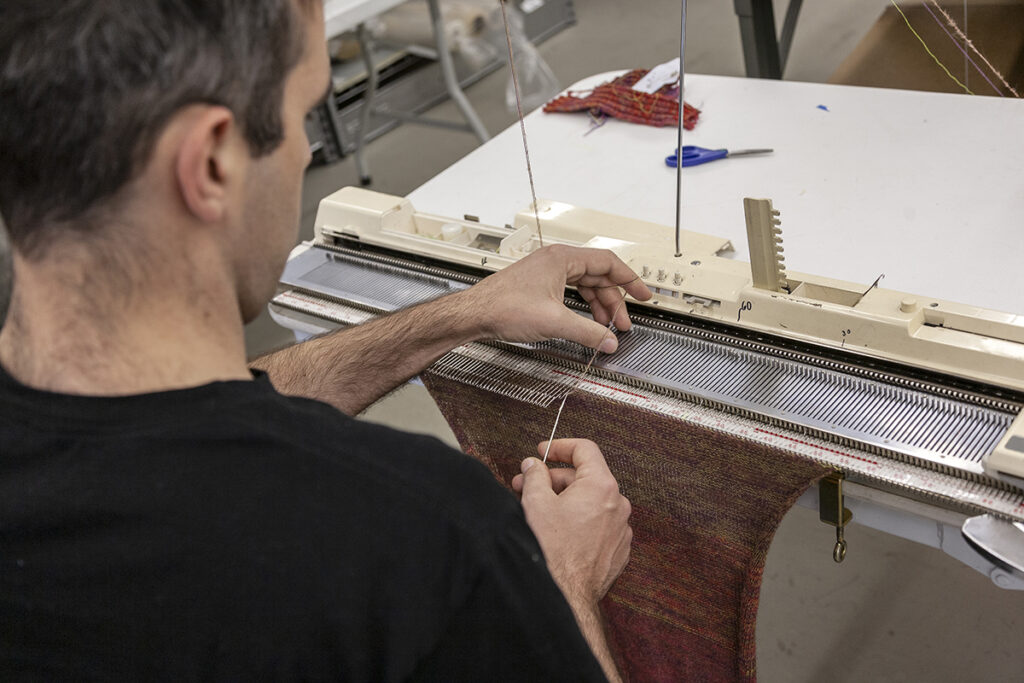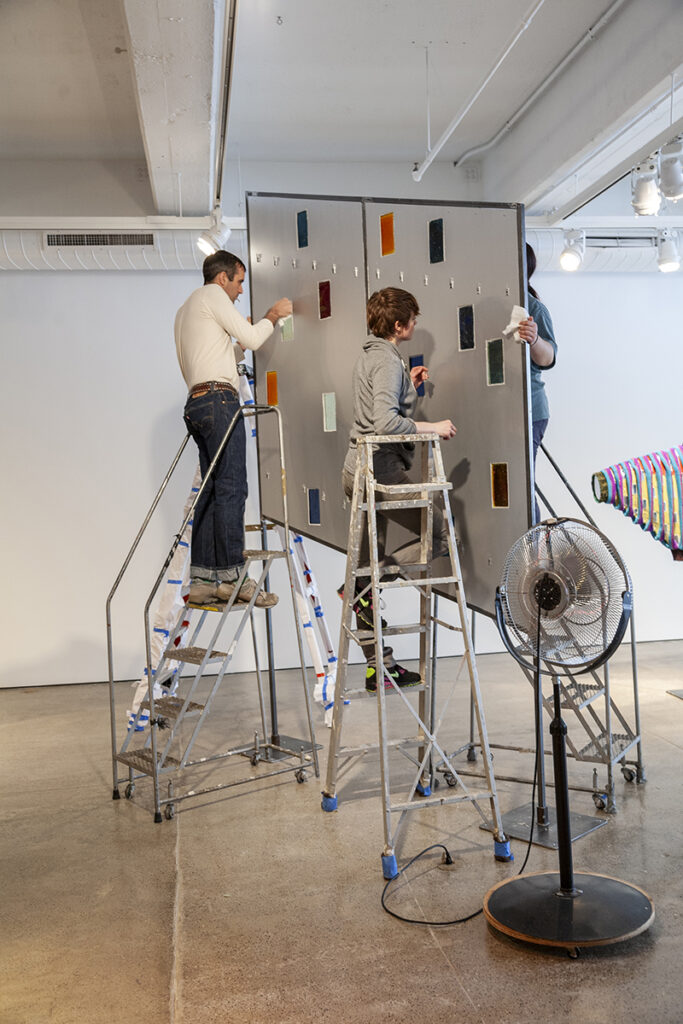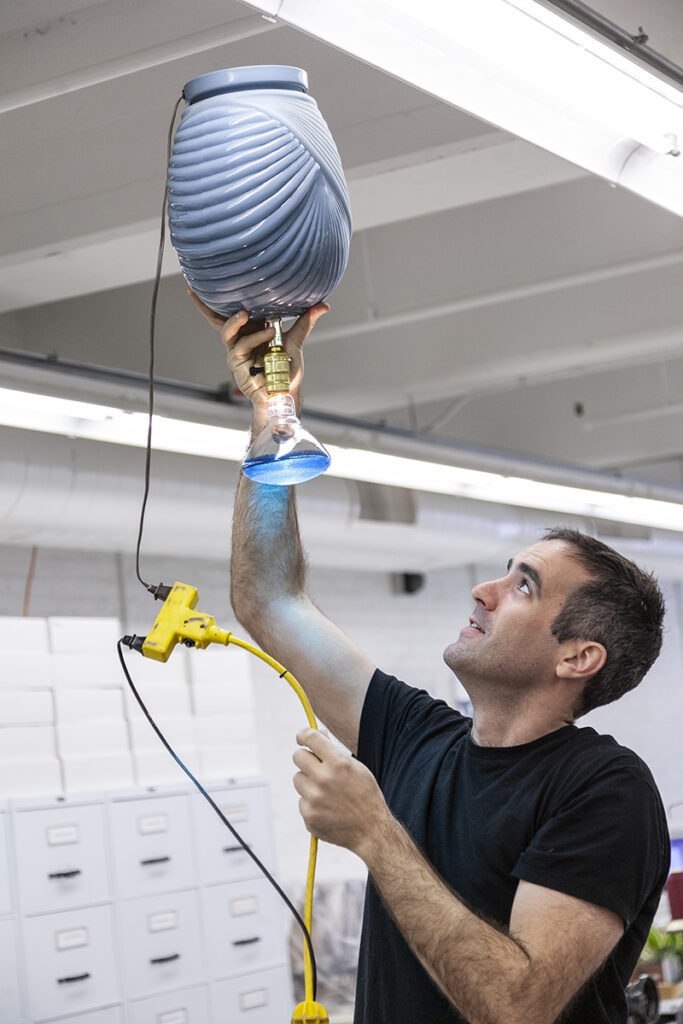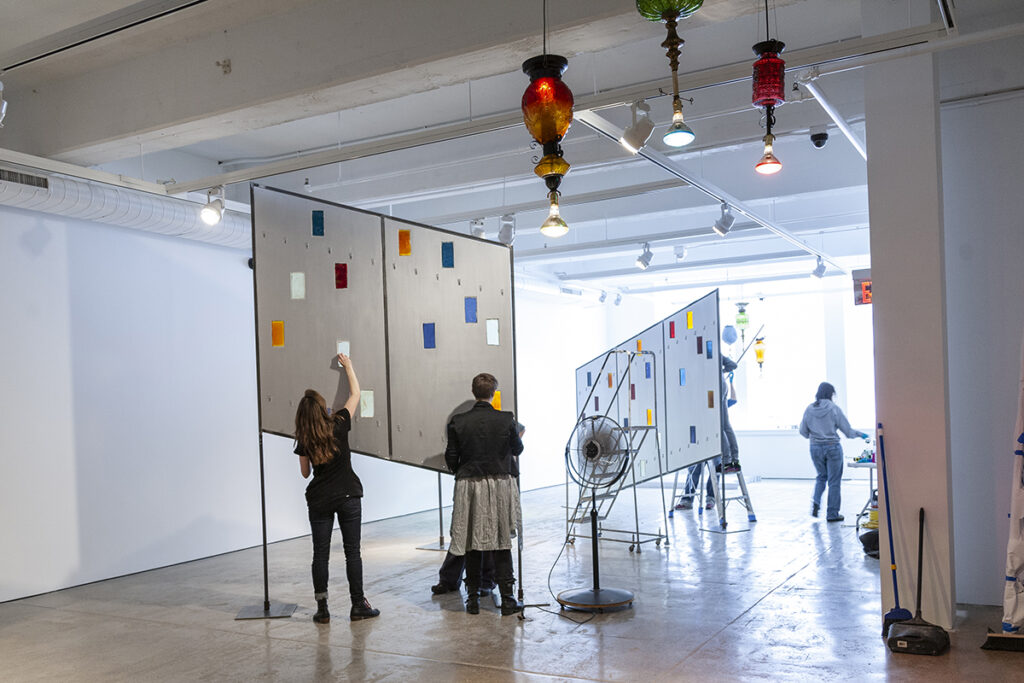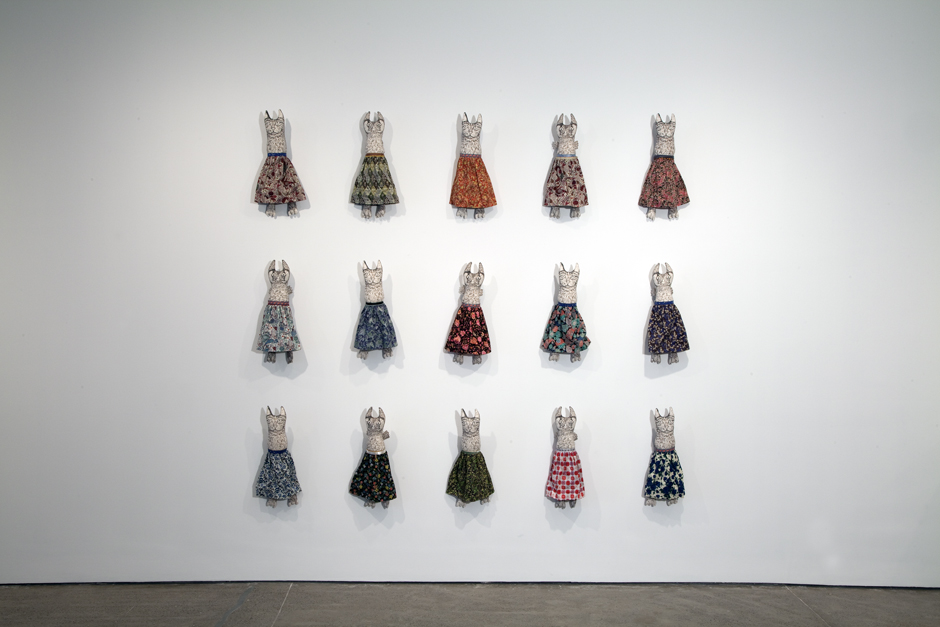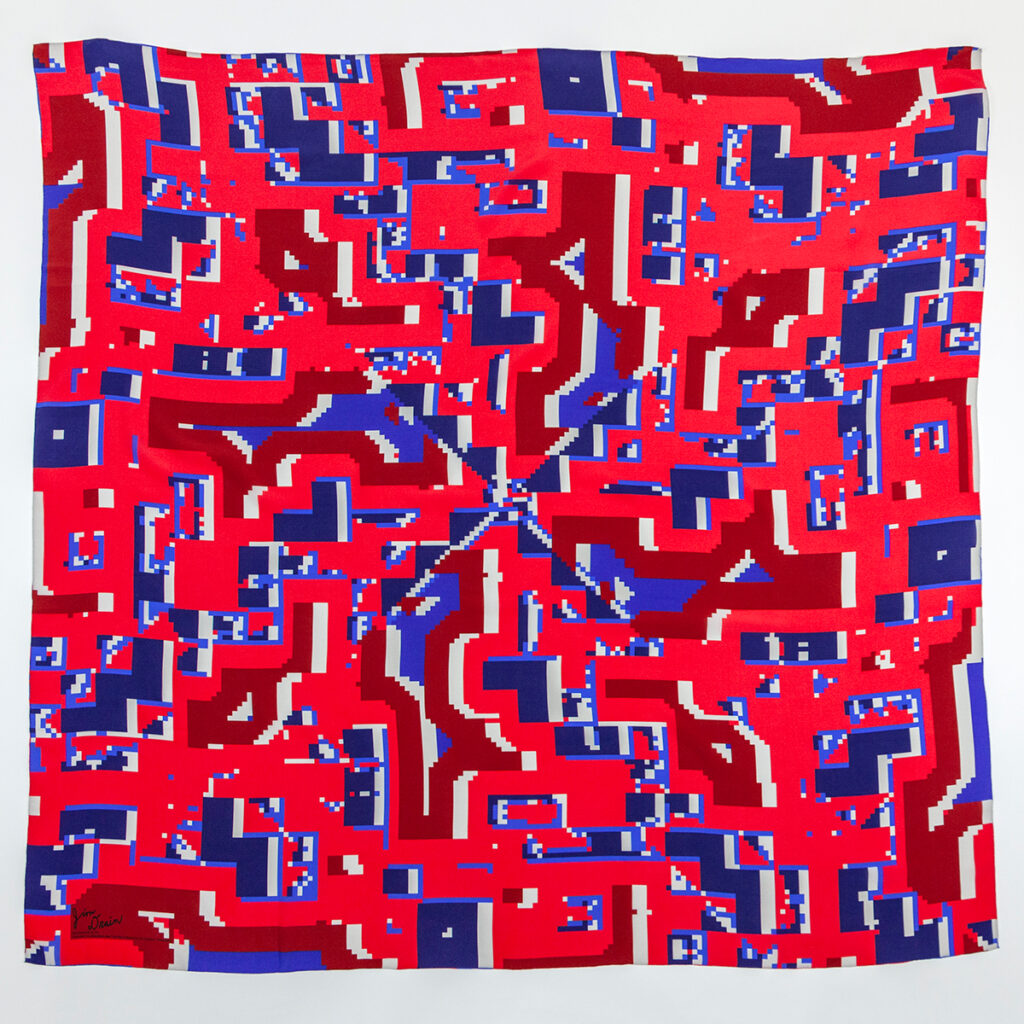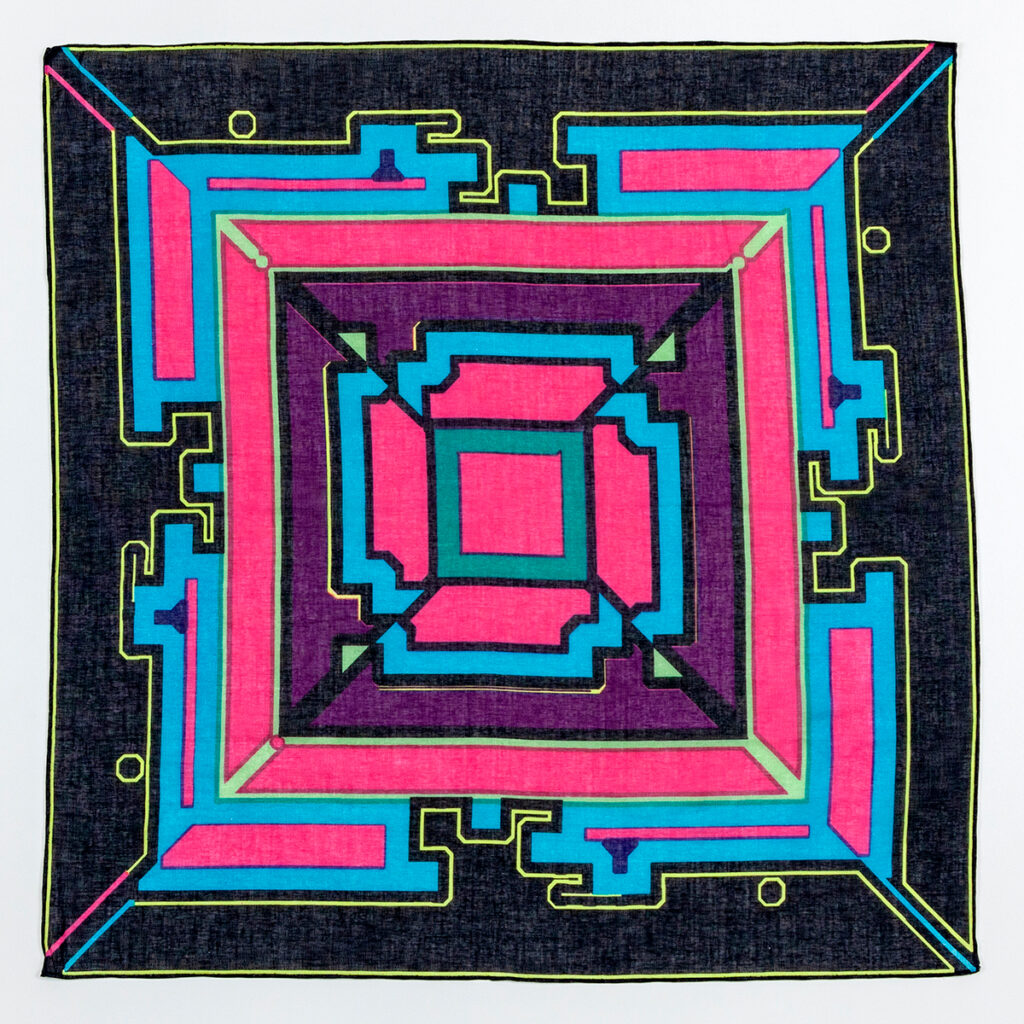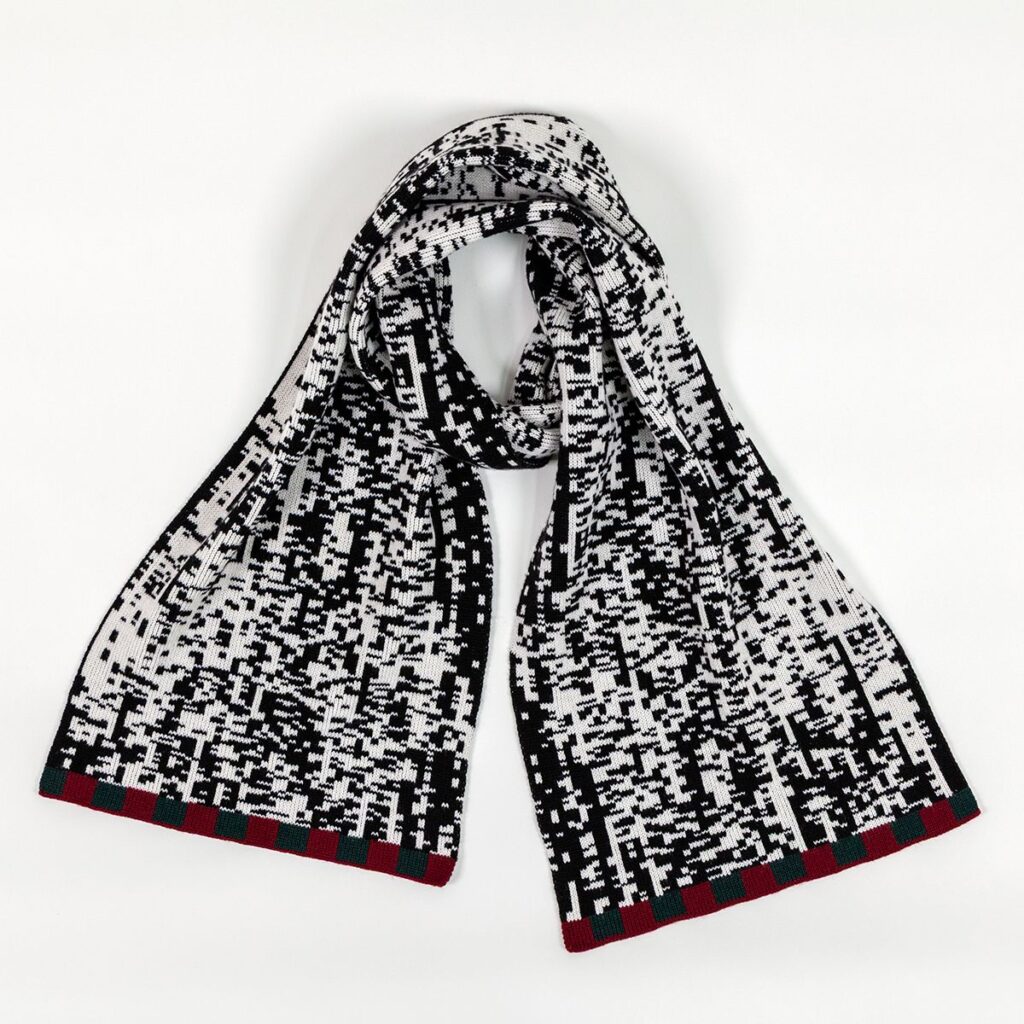Jim Drain creates elaborate, colorful, and anthropomorphic sculptures. His multidisciplinary practice incorporates textiles with an architectural approach—blending various knits, objects and found materials to create experiences of lively color, shape and pattern. Drain intentionally leans into ambiguity, allowing viewers to engage with his work on their terms; vibrant visual elements function much like music, introducing layers of psychedelic complexity, improvisation, and open-endedness that empowers viewers to become active participants, crafting their own interpretations. As the co-founder of the collective Forcefield, which participated in the 2002 Whitney Biennial, it follows that Drain’s art thrives on collaboration, making his approach to creation well suited for a residency at The Fabric Workshop and Museum, which he undertook in 2010.
At FWM, Drain produced samples that were referenced to construct two knitted sweaters. In these works, the sculpture becomes the “armature” for the sweater, and the “pleat” of the sweater the sculpture. Drain, using every kind of fabric possible for his work, embellished these patterned, sculptural works with beading along its many pleated folds. In addition to these fabric armatures, he and the Studio constructed a set of free-standing panels of glass and wood— skewed parallelograms that lift off the gallery floor on one end, illuminated by hanging light assemblages. Contrasting sensibilities are at work as Drain mixes hard materials with soft, color objects with color light, textiles with pixilation—all working together to create vibrant, abstract works.
Reflecting on his own work, Drain said, “Knitting is like painting…you never know how the colors are going to work together—in pattern, in texture, after being washed or fluffed or felted.” In a Philadelphia Inquirer review of the exhibition New American Voices II, which included Drain’s Pleat Construction, the late critic Edward J. Sozanski wrote that Drain “has transformed sweater forms, knit by machine, into chromatically bold sculptures whose textural richness has to be studied up-close to be fully appreciated.”
Additionally, Drain’s collaboration with the FWM Studio extended into the Museum Shop, where his dazzling abstract designs have found final form as silk and cashmere scarves as well as a duo of cotton kerchiefs.
